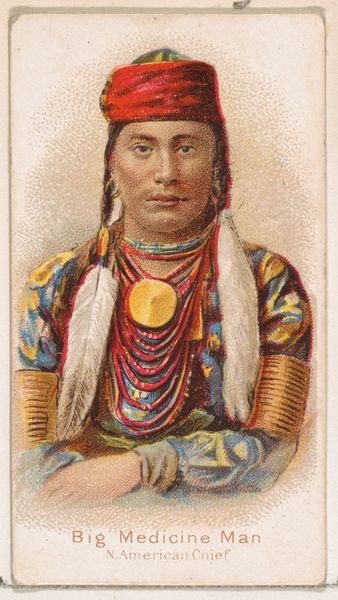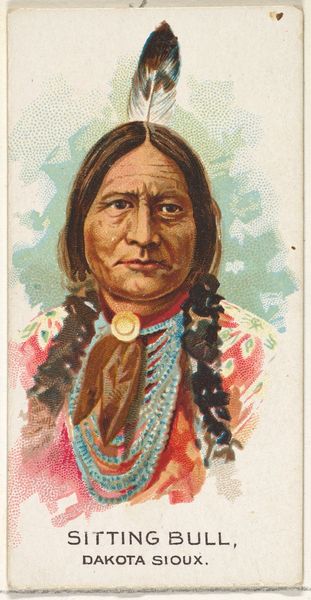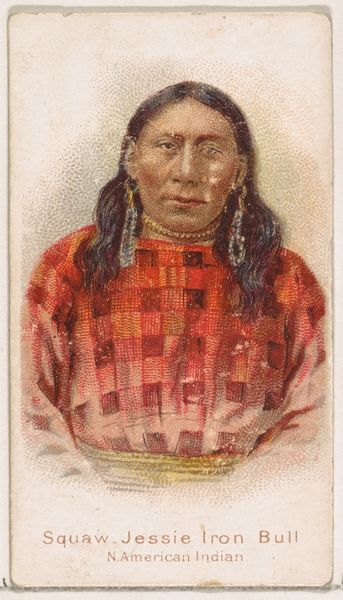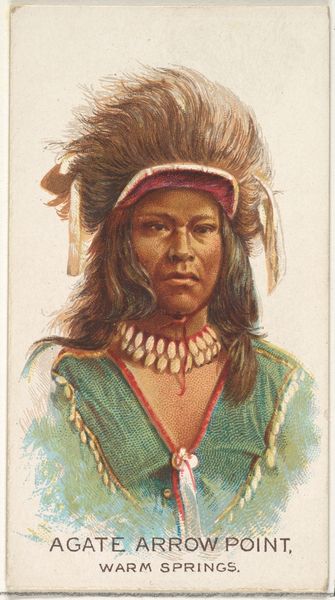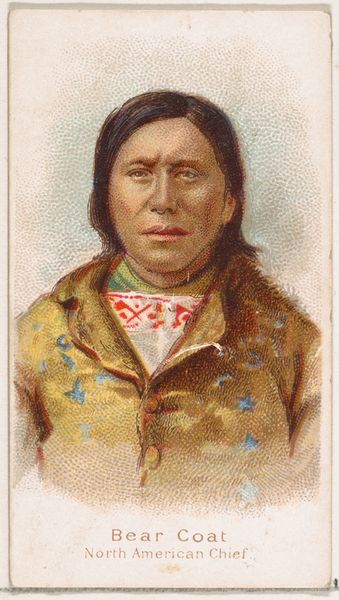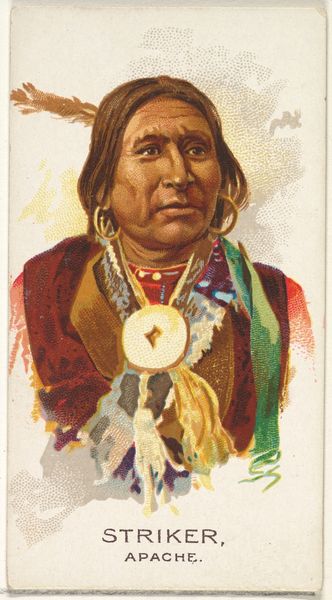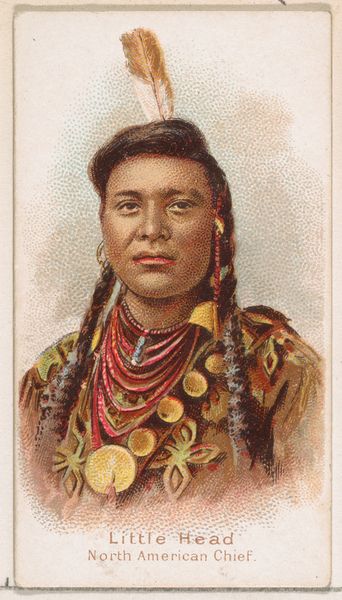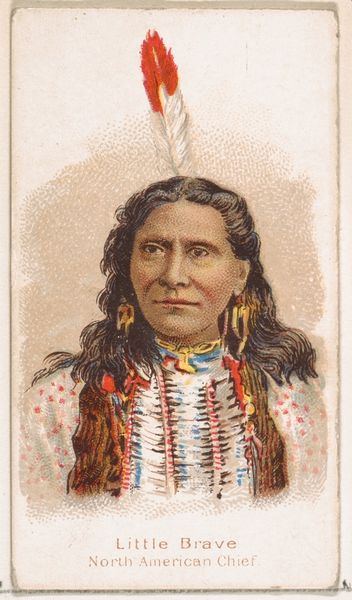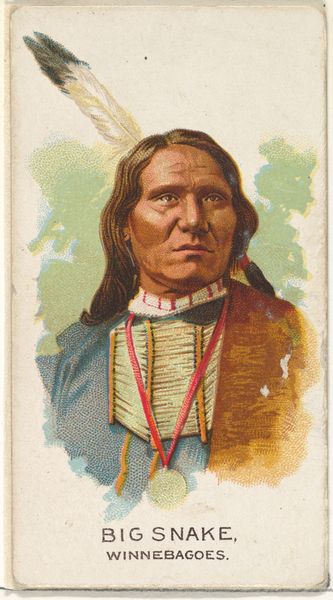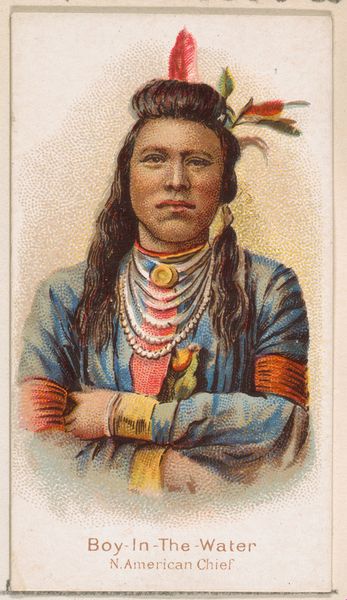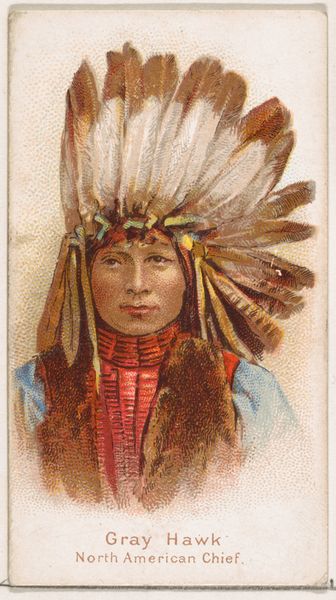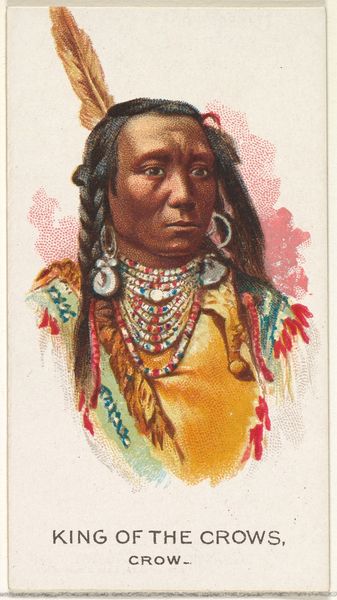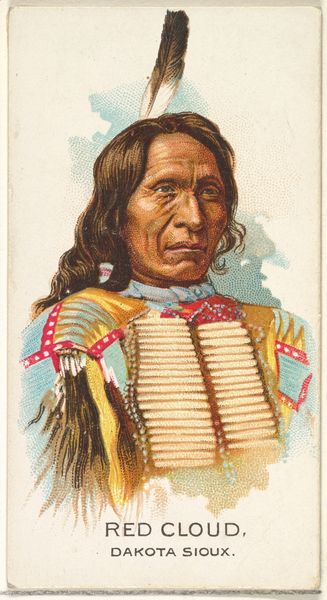
Sitting Bull, North American Chief, from the Savage and Semi-Barbarous Chiefs and Rulers series (N189) issued by Wm. S. Kimball & Co. 1888
0:00
0:00
#
portrait
# print
Dimensions: Sheet: 2 11/16 × 1 1/2 in. (6.8 × 3.8 cm)
Copyright: Public Domain
Editor: This is a portrait of Sitting Bull, a North American Chief. It’s a print made around 1888 by Wm. S. Kimball & Co. from their Savage and Semi-Barbarous Chiefs and Rulers series. There's such an interesting tension to the image – a clear attempt to document, but with a title that feels… loaded. What jumps out at you? Curator: The title "Savage and Semi-Barbarous" immediately reveals the skewed cultural lens through which Sitting Bull, and indeed all Indigenous peoples, were viewed. The feather, of course, speaks of leadership and spiritual connection, but note how it's presented almost as a curiosity. What do you make of his gaze? Editor: He looks... serious, maybe a little sad? His expression seems at odds with that title, which wants to paint him as something fearsome. Curator: Precisely. It is a clash of intended meaning and perhaps, the unintentional revelation of the subject’s dignity. Consider how the Western imagination used images like this to perpetuate narratives of conquest and dominance, subtly associating indigenous people with ideas of lawlessness and untamed wilderness. Does his clothing reveal anything about his status? Editor: His garments appear richly decorated, suggesting a man of importance. That circular medallion seems particularly significant, catching the light in a way that draws the eye. Curator: Yes. Symbols become incredibly powerful precisely because they carry so much unspoken cultural information. What feelings does the image provoke? Editor: It makes me think about the complex and often contradictory ways cultures understand each other. This print tries to define Sitting Bull, but ultimately, it only tells us more about the biases of the time. Curator: And that is the lasting power of images – to unintentionally reflect not just the subject, but the perspective of the creator, inviting future audiences to decode layers of meaning beyond the surface. Editor: It really brings home how important it is to consider the context and intention behind the imagery we encounter. Thank you.
Comments
No comments
Be the first to comment and join the conversation on the ultimate creative platform.
